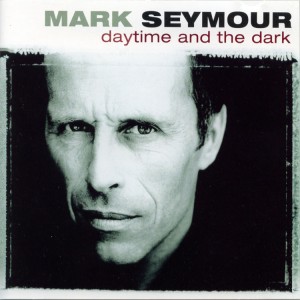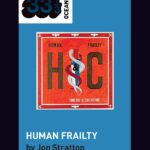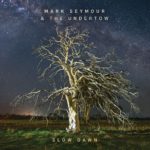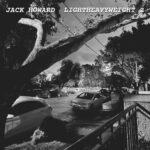Mark Seymour – Daytime and the Dark / Greatest Hits Acoustic
Daytime and the Dark
![]()
A wholly acoustic live studio album from Mark Seymour (2005).
Released in: [Australia / NZ].
Release Date: 14 March 2005. Bonus Track: 14 November 2005. Book: 28 November 2005.
Australian Chart Position: #99 (ARIA).
Availability: Moderately common. Available new in CD and digital form.
Value: A$10-A$30.
Greatest Hits Acoustic
![]()
Reissue of Daytime and the Dark with different artwork.
Released in: [Australia / NZ].
Release Date: 8 June 2012.
Australian Chart Position: [Did Not Enter].
Availability: Moderately common. Available new in CD and digital form.
Value: A$8-A$15.
Legend:
![]() Commercial single.
Commercial single.
![]() Promotional single.
Promotional single.
Version: Daytime and the Dark. Liberation Records Australian one CD album.
Album length: 50 minutes, 49 seconds.
ReplayGain loudness: -6.38dB (2005).
- Do You See What I See?

- Head Above Water
- Ready To Go
- True Tears Of Joy
- Radio Death Song
- When The River Runs Dry
- What’s A Few Men?
- Holy Grail
- See You Around
- You Stole My Thunder
- The Slab
- Throw Your Arms Around Me
- In The Kitchen Of A Perfect Home
- Good Old Boys Stuff
- The Dream You Had Last Night
Version: Daytime and the Dark Bonus Track Liberation Records Australian one CD album.
Album length: 54 minutes, 24 seconds.
ReplayGain loudness: -6.42dB (2005).
- Do You See What I See?

- Head Above Water
- Ready To Go
- True Tears Of Joy
- Radio Death Song
- When The River Runs Dry
- What’s A Few Men?
- Holy Grail
- See You Around
- You Stole My Thunder
- The Slab
- Throw Your Arms Around Me
- In The Kitchen Of A Perfect Home
- Good Old Boys Stuff
- The Dream You Had Last Night
- April Sun In Cuba

Version: Greatest Hits Acoustic Liberation Records Australian one CD album.
Album length: 54 minutes, 24 seconds. See above bonus track version.
Original studio source of the songs on this compilation album:
- The Jaws Of Life contains:
- Human Frailty contains:
- Fate / What’s A Few Men? contains:
- Ghost Nation contains:
- Cut contains:
- One Eyed Man contains:
- Embedded contains:
Liberation Records promotional review:
After three solo albums of evolving sophistication, Hunters & Collectors are history for Mark Seymour. And funnily enough, that’s exactly what they are to the majority of Australians for whom Throw Your Arms Around Me and Holy Grail endure, like tea towels on a Hill’s Hoist, as flags on the cultural landscape.
More by accident than design, DAYTIME AND THE DARK is top-heavy with songs Mark thought he’d left behind, songs reborn by the immediacy of acoustic performance and the unpredictable prism of hindsight.
“With all respect to Hunters & Collectors, quite a few of these songs work better here than they did originally,” he says. “With Head Above Water and When the River Runs Dry, the whole emotion changed as a result of the arrangements. I found myself in a different landscape and singing quite differently.”
In plain fact, Mark has never sung better in his life, from the harmonic folk edifice of Radio Death Song to the propulsive rap reincarnation of The Slab. With the barest accompaniment, his voice and lyrics – an endlessly redrafted and refined commentary on the Australian urban identity – steal the spotlight.
“In the studio, you really need to bring something to the microphone that’s odd or spontaneous. Stole My Thunder just came from nowhere cause it’s not a song I play. Ready To Go I play all the time, but it translated really well on the day. It was mostly about what happened in here,” he says, tapping his chest.
In the Kitchen Of A Perfect Home is another current song that found its definitive expression via spontaneity. Nearly 20 years older, What’s A Few Men reiterates its contemporary relevance with an even more stark and sorrowful tone.
Of the two new tunes, Good Ol’ Boys is a deeply affecting case of reflection and closure for Mark. Dream You Had Last Night is the first taste of a potentially fruitful collaboration with his sister, Hilary Seymour, The skill and perspective imparted by untold experience elevates each to the stature of his best work.
“20 years ago I couldn’t have done this,” he says. “Technically, I was incapable of going into a studio and being on top of the song like this, to invade the microphone really aggressively. It’s definitely made me more confident for the future. It’s made me realise, if I keep it simple and honest, I can do what I like.”
Mark’s first message on his Internet site about the album:
“This record was recording during the months of October and November 2004. It was produced by Cameron MacKenzie in his home, which is located somewhere in the eastern suburbs of Melbourne.. We surrounded ourselves with lots of Maton acoustic guitars and a few other ‘brands’, which were kindly donated by Guy Palmer from the Acoustic Centre in South Melbourne.
The whole thing was played into a big Neumann microphone with unusual haste, and Cameron, in his inimicable style, sweated over the detail while I made the tea.”
[Normal CD Version]
Acoustic music has saved me. In 1996 I stepped onto a small stage in North Melbourne with nothing more in mind than to have a blow while Hunters and Collectors had a rest. I was bored, jaded and in that numb state that songwriters have to drag themselves through sometimes, when the songs become trapped in the head from too much routine and tedium. I felt as though I had nothing more to say and that somehow if I could give the ‘live thing’ a serious shake up, the imagination might benefit too!
I’d been quietly nurturing the idea of presenting my voice in a way that left nothing to the imagination. Could I really sing, or was it as I sometimes felt, an angst-ridden squawk all tarted up with buckets of electronic effects buried inside a wall of drums, brass and bass?
The room was called the “Public Bar”. Interesting place. Back packers go there. For a local pub it has a strangely European feeling. I had at that time about an hour of material and though I’m not sure I was that convincing, (somebody yelled out a request for Peter Frampton), it was the most adrenalin filled hour I’d lived through in years. I was hooked.
The rawness of the acoustic experience has fuelled my writing ever since. As the years have passed, the songs have grown and evolved in new and unexpected ways. To be blunt, like many singer songwriters of my generation, the willingness of commercial radio stations to play our ‘new stuff’ has all but dried up which has forced us to really take a good hard look at why we’re still in the game. And the answer I came up with is the same as it always was. Live performance is my lifeblood. It’s what I do. But it is also the crucible of great music. I discovered once again that age old truism of rock n’ roll. If it goes down like a lead balloon in front of a crowd, ditch it. But the truth about great songs goes deeper than that. If a song doesn’t work acoustically it doesn’t work. The emotion is false. It won’t speak. It won’t ring true. Good songs endure. People want to hear them, and if they’re really good, then the people will want to hear them again and again. So, in an industry that is getting tougher and more cynical by the minute I have found a reason to hang in there. Acoustic performance has enabled me to keep doing the thing I love most and brought new vitality and vigour to songs both old and new.
Drums: Cameron McGlinchie
Percussion: Tony Floyd
Guitars, percussion: Cameron McKenzie
Guitars, vox: “The Seemstress”
Guest vocalist: Louise McCarthy
Keyboards: James Black
Tin whistle: Andrew Carswell
Management: Michael Roberts – Loud & Clear Management
Produced & engineered by Cameron Mackenzie
Live sound by Robert Miles
Artwork by Jo Vautier
Photography by Isamu Sawa
Special thanks to Warren Costello
This record was recorded during the months of October and November 2004. It was produced by Cameron
McKenzie in his home, which is located somewhere in the eastern suburbs of Melbourne. We surrounded ourselves with acoustic guitars that were kindly donated by Guy
Palmer from the Acoustic Centre in South Melbourne.
The whole thing was played into a big Nuemann
microphone with unusual haste, and Cameron, in his
inimicable style, sweated over the detail while I made the tea.
We were robbed. Some lowly human creature entered the premises while we were away touring in W.A. and removed two Fender guitars. One is a Telecaster. It is dark brown with a black scratch plate and a rosewood fingerboard. The other is a Fender Mustang bass in metallic blue with a white ‘mother of pearl’ scratch plate. I can only hope that these dearly loved items have arrived in the hands of someone who will appreciate them as much as I have.
[Book CD Version]
Mark Seymour has long been recognised for his powerful music style, intense lyrics and ability to engage an audience. The Daytime and the Dark book/CD is a raw and compelling collection of 15 superb acoustic tracks along with insightful text and photographs which together evoke a sense of the brilliance of this exceptional Australian musician.
Ed Nimmervoll
‘With all respect to Hunters and Collectors,’ says Mark Seymour, ‘quite a few of the songs work better on the Daytime and the Dark [acoustic] album than they did originally.’
With, for example, ‘Head Above Water’ and ‘When The River Runs Dry’ [both originally by Hunters and Collectors], ‘the whole emotion changed as a result of the [recording] arrangements. I found myself in a different landscape, and singing quite differently.’
‘In the studio, you have to bring something to the microphone that’s odd or spontaneous. Twenty years ago, I couldn’t have done that. Technically, I was incapable of going into a studio and being on top of a song in that way, and being able to invade the microphone so aggressively. It’s definitely made me more confident for the future. It’s made me realise, if I keep it simple and honest, I can do what I like.’
Daytime and the Dark is part of the evolution of Mark Seymour as singer and songwriter. After 16 years and 10 albums with Hunters and Collectors, and three solo albums – King Without A Clue, One Eyed Man and Embedded – Daytime and the Dark was a chance for Mark and his audience to take stock, by accident rather than design, and recast songs that Mark thought, or expected, to have left behind. While the shadow of Hunters and Collectors may have loomed too large for others, it didn’t for Mark. That’s history, and Mark has moved on.
Yet, in the end, Mark Seymour is still [at least in part] the legacy of the Hunters and Collectors phenomenon, itself a ground-breaking Australian band which shook audiences out of their complacency and struck a primal nerve when it first surfaced on the Melbourne club scene in the early 1980’s. The essence of what Mark has now become had its beginnings with that group. All that he’s since learned about music, and the other influence he’s absorbed, are touched by that experience.
What initially took seek inside Hunters and Collectors was Mark Seymour’s love of words, his discovery of his voice, and his learning to write to these strengths. This was to become an evolving process that continues on the ‘solo’ albums.
Mark grew up with his brother Nick and two sisters Helen and Hilary in country Victoria. The folk music he drew upon during his transition from the Hunters and Collectors to his solo career came from there. When they were young, the Seymour children were encouraged to perform shows together as part of their personal development. Both parents were teachers. Mark ended up training to be an English teacher as well, but the music career just happened instead.
‘I just drifted into it,’ says Mark. ‘It wasn’t until age 23 in 1982 that I was seriously singing.’
The early Hunters songs were like the group itself: a communal collection of ideas. Mark found himself toiling at the words that came with these songs, never satisfied to leave them as they might have been and instead wanting to make sure they ‘said something and meant something’. Yet despite the success of their first single [‘Talking To A Stranger’], it was to take the Hunters some time to focus on this aspect of their music. Instead, their exciting performances turned them into Australian rock’s ‘next big thing’, and led them to make an ultimately unsuccessful trip to Europe and the UK. The group spent six miserable months living in the UK, and upon their return to Australia re-evaluated their sound and their place in the world.
On the breakthrough third album, The Jaws Of Life, Mark Seymour started to fill his songs with Australian imagery:
‘I just think there’s an experience and a language Australians embrace when they listen to and appreciate music that’s been created by their own kind. If you’re prepared to tap into that, and recognise that, it becomes its own reward. That’s what keeps me going. I love doing it. I love the expressions on their faces, their body movements. I know when I’ve connected – they’re smiling, they’re animated, they’re listening.’
Mark says that when Hunters and Collectors first started assembling ideas and creating new songs, they began to concentrate on the song’s parts, and how they would impact on the audience. Instead of giving the audience what they wanted, they worked at ways to move them physically and emotionally. Once moved, the Hunters kept pushing at them.
Then Mark’s words took to reflecting on the audience’s lives and loves. He’d started his career-long fascination with the audience in front of him, wondering what motivated them, and what made them who they were. That fascination, touched by his own experience and thoughts, fueled his songwriting.
‘I think people are interested in what I sing about because they believe it’s coming from an honest place. When I write songs, I tap into a part of myself that’s at the core of me. I don’t have any other way of doing it. It’s inherent in the way I sing. Yet, I’m always intrigued by how vastly removed people’s perception of songs are to what I was actually thinking when I wrote them. The way my mind works, and how I arrive at something, are worlds apart from the perception.’
‘There may be a few essential ingredients that seep through and people connect with, but I’m much happier letting songs go, to see life breathed into them when they become this experience that other people have. I loved that idea.’
‘People sometimes say to me, “How can you be bothered singing that song ‘Holy Grail’ over and over again?” The thing is, that song constantly fascinates me. I don’t know how many friggin’ songs I’ve written, but that’s one song I’m happy to keep singing because it has this weird absurdity about it.’
‘I love performing. I put as much intensity and passion into a performance as I can muster and as warranted by the gig. Any audience is an audience. I don’t give a fuck what they’re wearing, where they’re coming from, what they’re pre-occupied with – as long as I can connect with them. I don’t have an agenda.’
His intensely powerful performances are one thing, but they wouldn’t be quite the emotional experience they are without his songs. It’s a process that’s become a natural part of life for Mark Seymour.
‘I never really stop doing it [songwriting]. There’s always a part of my brain that’s going it. While that’s going on, I’m just waiting for that special combination of elements to excite me. The clock’s ticking and I’m just waiting stewing away at stuff. A lot of the time, it may not be all that good to me, but I’ve decided it might be good for something else, an that’s why these days I look for opportunities outside of the recording process – for theatres, film, whatever.’
His three solo albums and the Daytime and the Dark acoustic retrospective highlight the well-established character and quality of Mark Seymour’s songwriting.
‘I tend to be incredibly self-critical, almost destructively self-critical,’ he says. ‘Ninety per cent of songwriting is navel gazing, but the ten per cent that makes the cut is the stuff that’s out of yourself. For some reason, you spend so much time thinking. Your mind’s almost your enemy. . .’
Do You See What I See? From the 1987 H&C album What’s A Few Men?, issued in America and then re-issued in Australia as Fate.
Head Above Water. The first single released from the 1992 H&C album Cut.
Ready To Go. From Mark’s 2001 second solo album One Eyed Man.
Tears Of Joy. Another cut from Cut. Mark: She’s standing at the gate about to depart for Tokyo to pursue dubious employment. She doesn’t want to go, doesn’t know why she’s going, runs off . . . tears streaming down her face. Hardly joyous. That came later.
Radio Death Song. Original released on a bonus Live At The Continental CD EP packaged in 1997 with Mark’s first solo album, King Without A Clue.
When The River Runs Dry. From H&C’s 1989 album Ghost Nation.
What’s A Few Men? The title song from the 1987 album. Mark: It encapsulated the gentle Australian male. A war story. Albert Facey’s autobiography, written during World War 1. A beautiful tale of courage and suffering, in the face of enemy gunfire, and the indifference to Australian dead amongst the British officer class.
Holy Grail. Also from Cut. Mark: Obsessed with a vision of a Russian Eldorado, Napoleon forced the grand army to march on Moscow in the winter of 1812. They froze to death in the ice and snow and the crows moved in to feed. This song was originally conceived while reading ‘Art and Lies’ by Jeanette Winterson, a little light relief, during the recording of ‘Cut’. It’s a parable about an army whose beliefs led to its own destruction. It also alludes to the endless search for the ‘rock ‘n’ roll carrot’ (otherwise known as ‘the Holy Grail’), that dangles before the collective nose of every band that ever walked the earth. Now a major sporting event standard…
See You Around Sometime. Another natural selection from One Eyed Man.
You Stole My Thunder. Originally featured on Ghost Nation. Mark: This acoustic version just came out of nowhere in the studio. It’s not a song I play.
The Slab. From the 1984 H&C album Jaws Of Life. An alternative name used for ‘The Slab’ early in the song’s life was ‘Betty’s Worry’. Mark: Drinking, oral sex fantasy, Jon Archer’s strident bass run. 1983, in Germany and we were revelling in the idea that we didn’t have to be artistically pretentious anymore. Doing the autobahn in a hired Mercedes, 225 kmh. Totally legal. The first Hunters road stories were written then. There was a sense of relief. We were writing the album we would tour with. In Australia. The band was smaller. The energy was simple and direct.
Throw Your Arms Around Me. Mark himself has recorded seven versions, initially with H&C in raw form on the 1985 live album The Way To Go Out and then as a single. It was also covered by Crowded House and Pearl Jam and named in 2001 as one of APRA’s top Australian songs of all time. Mark: Love songs are hard enough to pull off tastefully. The strength of Arms is in its honesty, and a very simple hooky chorus. Other than that there isn’t much else to say. It’s personal. I wrote it when I was in a relationship. We were living on opposite sides of Melbourne and I would go and see her at often as I could. The song literally describes that journey across town and into her arms.
In The Kitchen Of A Perfect Home. From Mark’s 2004 album Embedded.
Good Old Boys Stuff. One of the two new songs on the acoustic album, inspired by Mark’s relationships in his earlier years that were ‘doomed not to survive’.
The Dream You Had Last Night. The 2nd new song, and the 1st taste of a songwriting collaboration with Mark’s sister Hilary.
Acknowledgements
The Author and Publisher express their thanks to all the people who helped bring this book/CD to fruition. Special thanks to Mark Seymour, Warren Costello (Liberation Music), Ian James (Mushroom Music Publishing and AMCOS), Paul Costello (Liberation Music) and Michael Roberts (Loud & Clear Management) for their co-operation and support. Photographs reproduced by kind permission of Mark Seymour, Loud & Clear Management and Liberation Music.
Tandem Publishing
[an imprint of Borghesi & Adam Publishers Pty Ltd]
Suite 330, 45 Glenferrie Road, Malvern
Victoria 3145 Australia
Tel +61 3 9533 8863 Fax +61 3 9533 8843
E-mail emma@brollybooks.com
Text by Ed.Nimmervoll
CD/book design & concept by Emma Borghesi
Front cover design based on the original
Daytime and the Dark CD cover designed by Jo Vautier
Photographs by Jo Vautier [p. 2], Martin Philby [pp. 6, 11 & back cover, courtesy XYZnetworks] & Isamu Sawa [front cover, p. 8]
Text (c) Ed.Nimmervoll, 2005.
Packaging and cd/book design & concept (c)B&APL, 2005
Lyrics and photography (c) the individual contributors
CD recording (c) & (c) 2005 Mark Seymour under exclusive license to Liberation Music for Australia and New Zealand.
CD reproduced by kind permission of Liberation Music for Australia and New Zealand, and AMCOS.
All rights reserved. Printed in China.
Copyright. This book and CD package is copyright. Apart from any use permitted under the Copyright Act 1968 (Australia) and subsequent amendments no part including but not limited to text, lyrics, packaging design and format may be reproduced, stored in a retrieval system or transmitted by any means or process whatsoever without the prior written permission of the Publisher. Moral Rights. The author, musicians, designers and publisher have asserted their Moral Rights in this work.
www.markseymour.com.au
www.acousticseries.com.au






